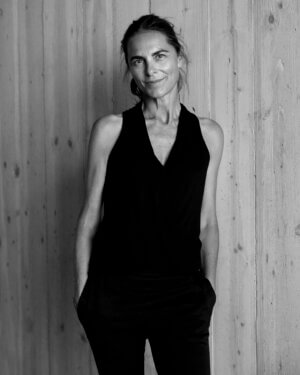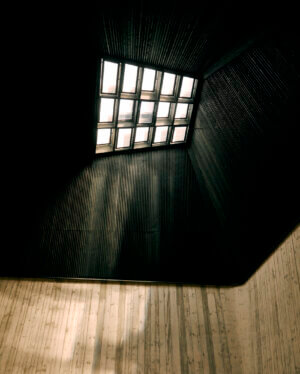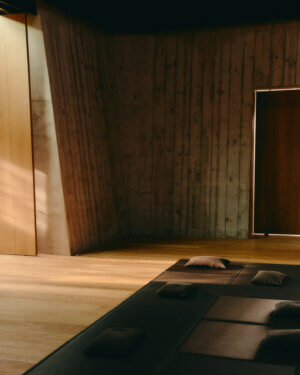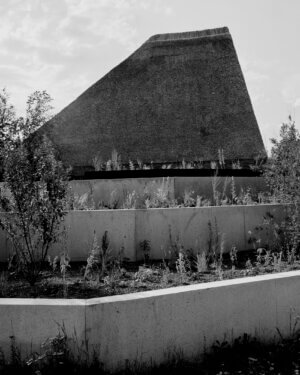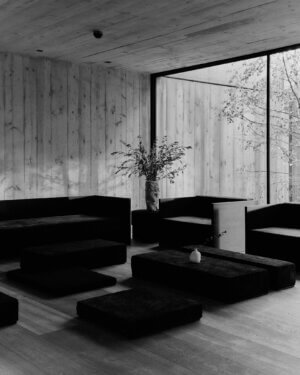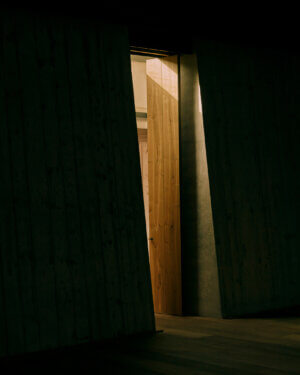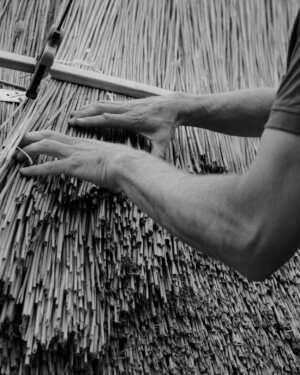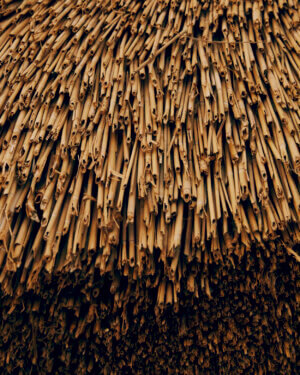From the grottos and mountains of South Tyrol to the temples of Indonesia and work of contemporary masters like Peter Zumthor, Monika Gogl drew inspiration for the Reethaus from across the globe and deep into her own childhood memories, spiritual yearnings and emotions. The result is a built environment unlike any other, where those who enter come into a deeper kind of communion – with art, with ideas and with one another. As we wrap up our first season of programming, we asked the Austrian architect, who founded her eponymous practice Gogl Architekten in 2001, to speak to us about her inspiration and creative process in helping us bring our subterranean performance space to fruition.
Interview
Building a Modern Temple with Monika Gogl
Reethaus Conversations
Building a Modern Temple with Monika Gogl
How do you create a modern temple? This was the question the Austrian architect set out to answer in designing the Reethaus, our subterranean performance space that opened in September at Flussbad campus in Berlin. Now, as we close on our first season of programming, we ask her to reflect on the singular space and how it became what it is today.
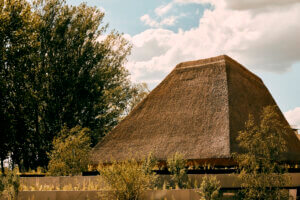
-
Photos
José Cuevas
Daniel Faro
How do you create a modern temple? This was the question the Austrian architect set out to answer in designing the Reethaus, our subterranean performance space that opened in September at Flussbad campus in Berlin. Now, as we close on our first season of programming, we ask her to reflect on the singular space and how it became what it is today.
-
Photos
José Cuevas
Daniel Faro
Slowness I understand that you've done a lot of research around the architecture of temples.
Monika Gogl I've been quite interested in the topic for a long time. I’m inspired by both contemporary and ancient examples. It’s a passion that certainly shaped the design of the Reethaus.
Slowness Are there certain shared qualities that define a temple?
Monika Gogl There’s great diversity of forms. In Christianity, the church belltower is an important element of the temple. To a certain extent, it's a defining architectural feature of a church. If you look at Buddhism and Hinduism, you notice something completely different.
Slowness Did your interest in temples grow out of personal religious experience?
Monika Gogl Since childhood I have tended to look at life holistically. Rituals were very important in my young life. Temples and churches have always fascinated me because of their spatial charisma, their sound, their smell and the collective impact of these ingredients when you enter.
Slowness Where did you grow up?
Monika Gogl I grew up on a farm in the mountains in the middle of untouched nature for the first five years of my life. Even as a child, I enjoyed drawing and imagining vast architectural spaces. When I was eight years old, I visited my grandmother at a mountain spa in Bad Gastein. I was deeply impressed by the facility and its rock bath designed by Gerhard Garstenauer - the combination of nature and space.
Slowness Are there any references near where you currently live in Innsbruck?
Monika Gogl There are many places that inspire me here in Tyrol, but they are natural places, not buildings. To a certain extent nature can recreate a temple-like feeling better than most buildings do. In the mountains, we often have these grottos where you have light streaming from above, but feel protected by the stone coming around you.
“To a certain extent nature can recreate a temple-like feeling better than most buildings do. In the mountains, we often have these grottos where you have light streaming from above, but feel protected by the stone coming around you.”
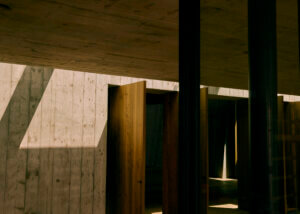
Slowness Beyond nature, what kind of reference points do you have for your conception of the modern temple?
Monika Gogl First of all, the question is: what is a modern temple? The Reethaus is a good example. It’s a really special kind of building we created on the banks of the Spree. Historically, a temple was always a house for religion. This begs the question: what is our shared religion now? I’d say it probably has to do with slowing down, sharpening the senses, smelling more, seeing more, and feeling more from your inner heart. I would say it's about reduction, because today we are all overloaded.
Slowness What are the material qualities of your modern temple?
Monika Gogl The modern temple is a space where you find spiritual intermediation. I always use the same essential materials in my projects. I call them pure materials because they are natural. Concrete, wood, stone, light, sound. It’s about the design and treatments of these materials. It's about creating an empty space. It's about the lighting.
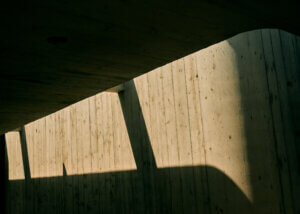
Slowness Are there certain design philosophies that inspire you?
Monika Gogl I find beauty in the Japanese concept of wabi sabi, accepting the natural and the imperfect. I embrace the wabi sabi of the material itself in how it can really help you clear your mind. It's not so easy to get into this mindset yourself. It’s architecture’s job to assist in this transition or transformation. You should enter a space, then slowly calm down. The inner room of the Reethaus is a ritual room designed for this purpose.
Slowness Were there any specific temples that inspired you?
Monika Gogl I visited a temple in Bali that possessed all these key elements I mentioned. And there are these powerful structures like the Bruder Klaus Field Chapel by Peter Zumthor. It’s simple, pure, and on point in its small proportion.I would say it’s brilliant. When you enter, you can feel something.
Slowness Where did you source the materials used in the Reethaus?
Monika Gogl I believe in a holistic approach to design and construction. The process impacts the space. Therefore, we don’t work with large factories, but rather small fabricators. We try to use materials that come from the immediate region, and sometimes we even use materials from the sites we build on in the countryside.
“A reed-roofed house is a reduced building. We aimed for this simplicity in the case of the materials and design of the Reethaus. Everything you see is based on the earth, giving you space to have a transformational experience within.”
Slowness What is at the core of your vision for the Reethaus?
Monika Gogl It’s all about nature, right? Around the reed dome, we have this green retention roof which is very beneficial for the immediate environment. It captures and stores rain falling on the roof, watering the plants the whole year since Berlin is quite a dry area. The retention roof is made with a natural material made of lava stone from the Eifel region in western Germany. This roofing material is intriguing because it has a double effect, promoting good climate conditions both for the plants on the exterior and for the humidity.
Slowness The reed roof strikes me as the emblematic design element of the building. It even became the name! Were you familiar with this technique?
Monika Gogl The technique is ancient. The Reethaus roof is quite special because it is made by a local Berlin craftsperson who is the last person in the city with this skill. The design and form required a lot of joint consideration.
Slowness You mentioned how light is an essential factor in temples. How does the Reethaus deal with light?
Monika Gogl The whole building is designed to maximize natural light, even in the inner room. Natural light diffuses in through the window at the top of the dome. At night, artificial light emanates from the same point, meaning we didn’t need to affix lighting to the walls. The whole body of the inner room is designed so that sound and light feel invisible and just come naturally.
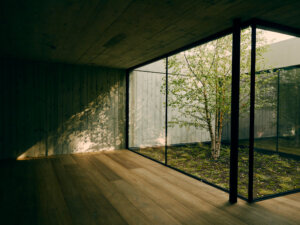
Slowness I remember the naming process was quite difficult. On one hand there is this simplicity, but on the other hand the building is a highly technological, sophisticated architectural space.
Monika Gogl Calling it something so plain as the Reethaus is ironic understatement, which I think is quite nice. I think back to the temple references next to my house that, in many ways, are nothing more than simple houses. A reed-roofed house is a reduced building. We aimed for this simplicity in the case of the materials and design of the Reethaus, hiding from view the technical qualities of the building like the spatial sound system. Everything you see is based on the earth, giving you space to have a transformational experience within. However, I firmly believe that human beings need a kind of tension, or roughness, in their temples. Otherwise, things get too aesthetic. There’s roughness in the Reethaus and its spatial effect.
Slowness What are you currently working on? Are there future projects that excite you?
Monika Gogl As a firm, we are working on various hospitality designs and houses, including a new urban project on the Weissensee. I’m also keen to start developing design objects such as furniture and lighting – objects with simple, elegant and intelligent details that match my purist approach to materials and architecture.
Slowness Now that the Reethaus is open, how do you think it embodies your original vision?
Monika Gogl I think the space is very powerful. When I saw a Sufi poet and harpist perform there for a private event, I physically felt the beauty and energy of the space. It is an ideal venue for the combination of art, sound and performance that synthesizes energy with calm.
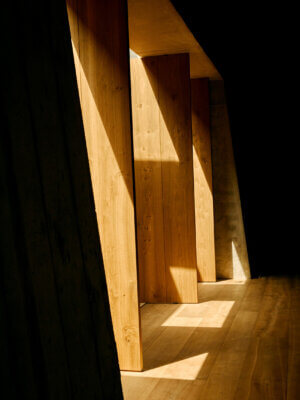
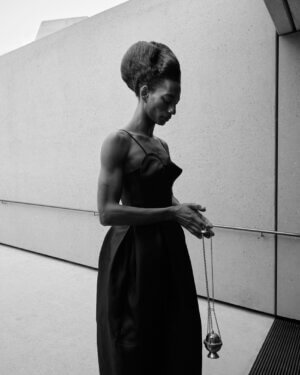
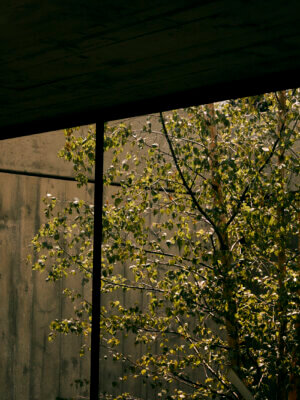
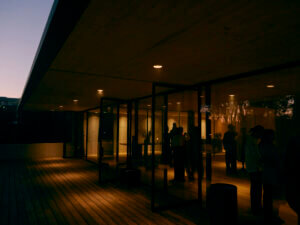
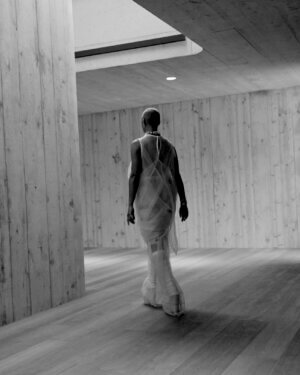
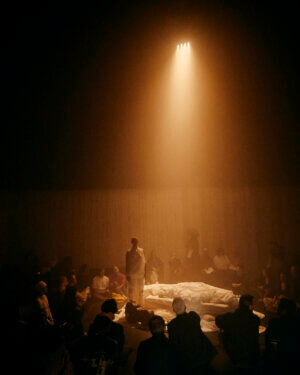
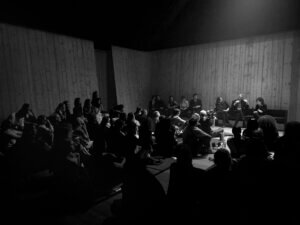
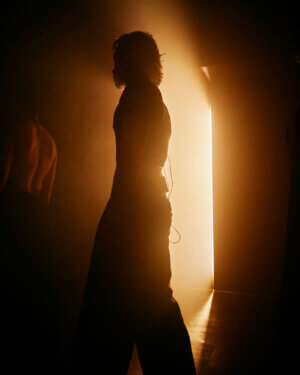
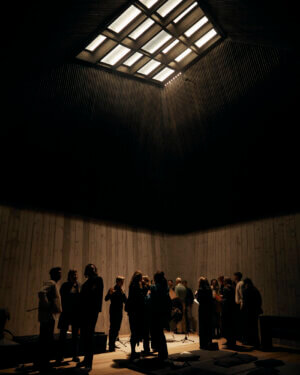
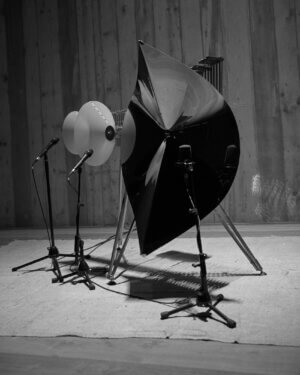










Contact
Berlin
Zur Alten Flussbadeanstalt 1
10317 Berlin, Germany
10317 Berlin, Germany
LISBON
Largo de Santa Marinha 1
1100-383 Lisbon, Portugal
1100-383 Lisbon, Portugal
Website by Studio Airport
